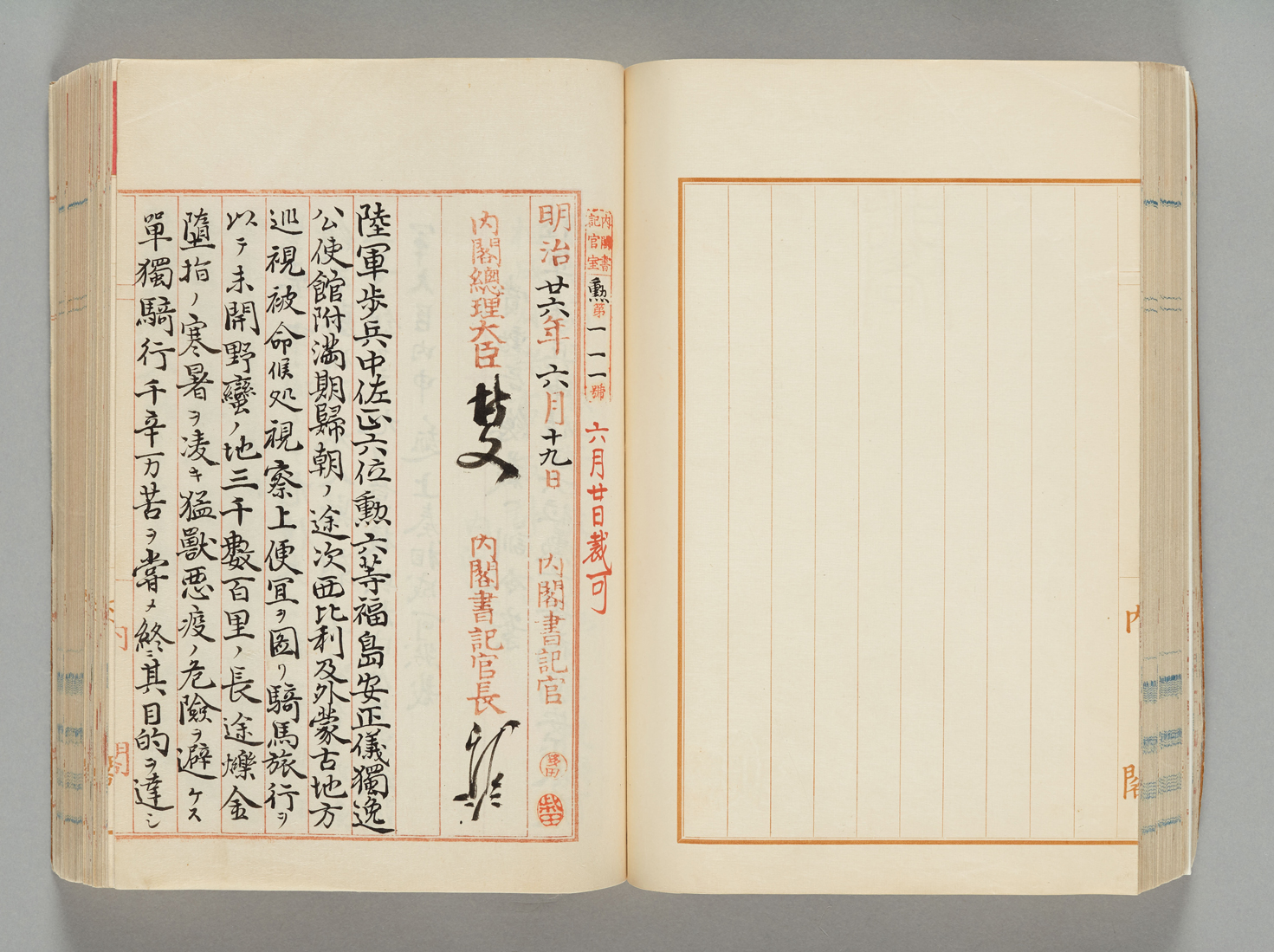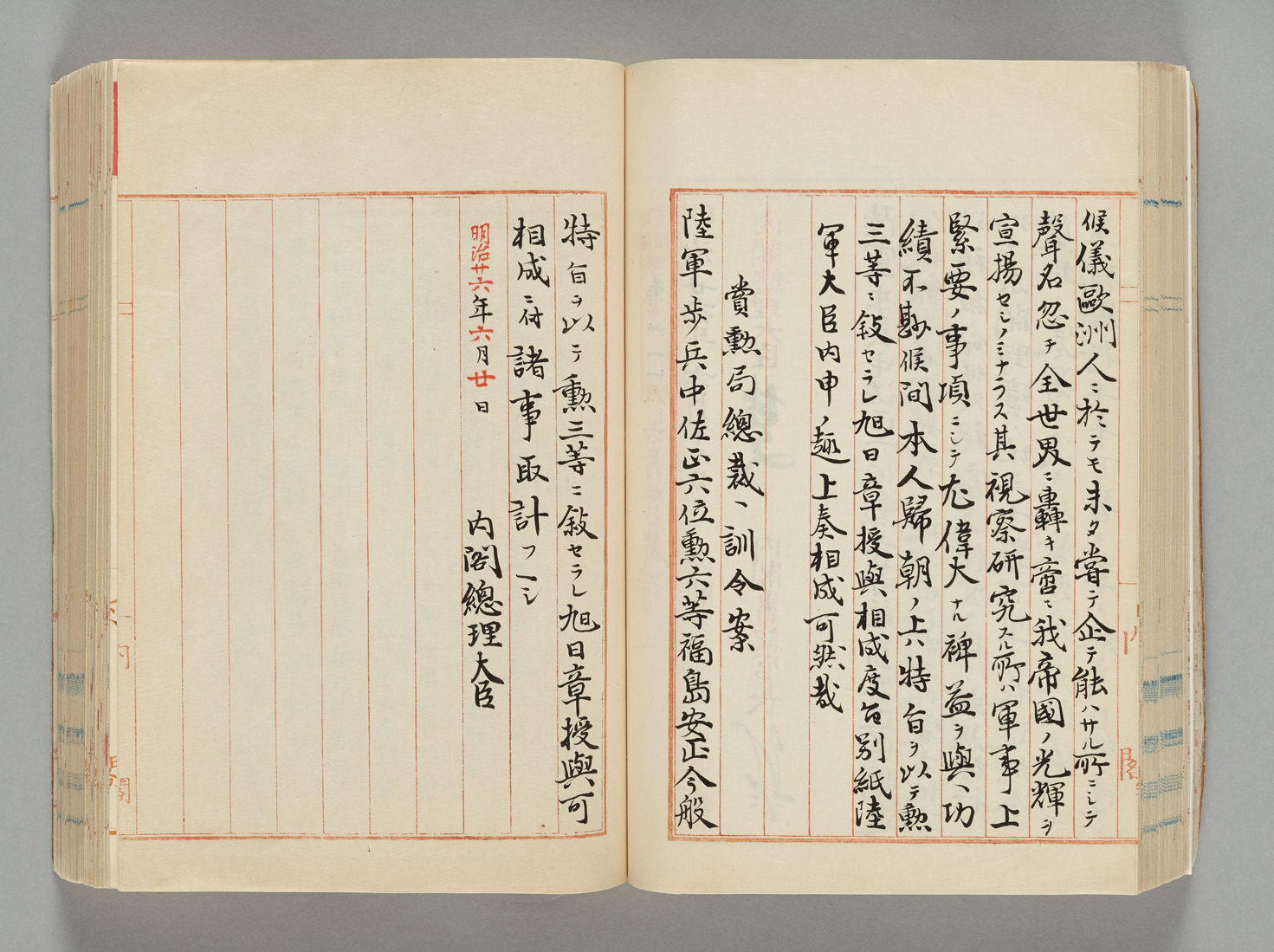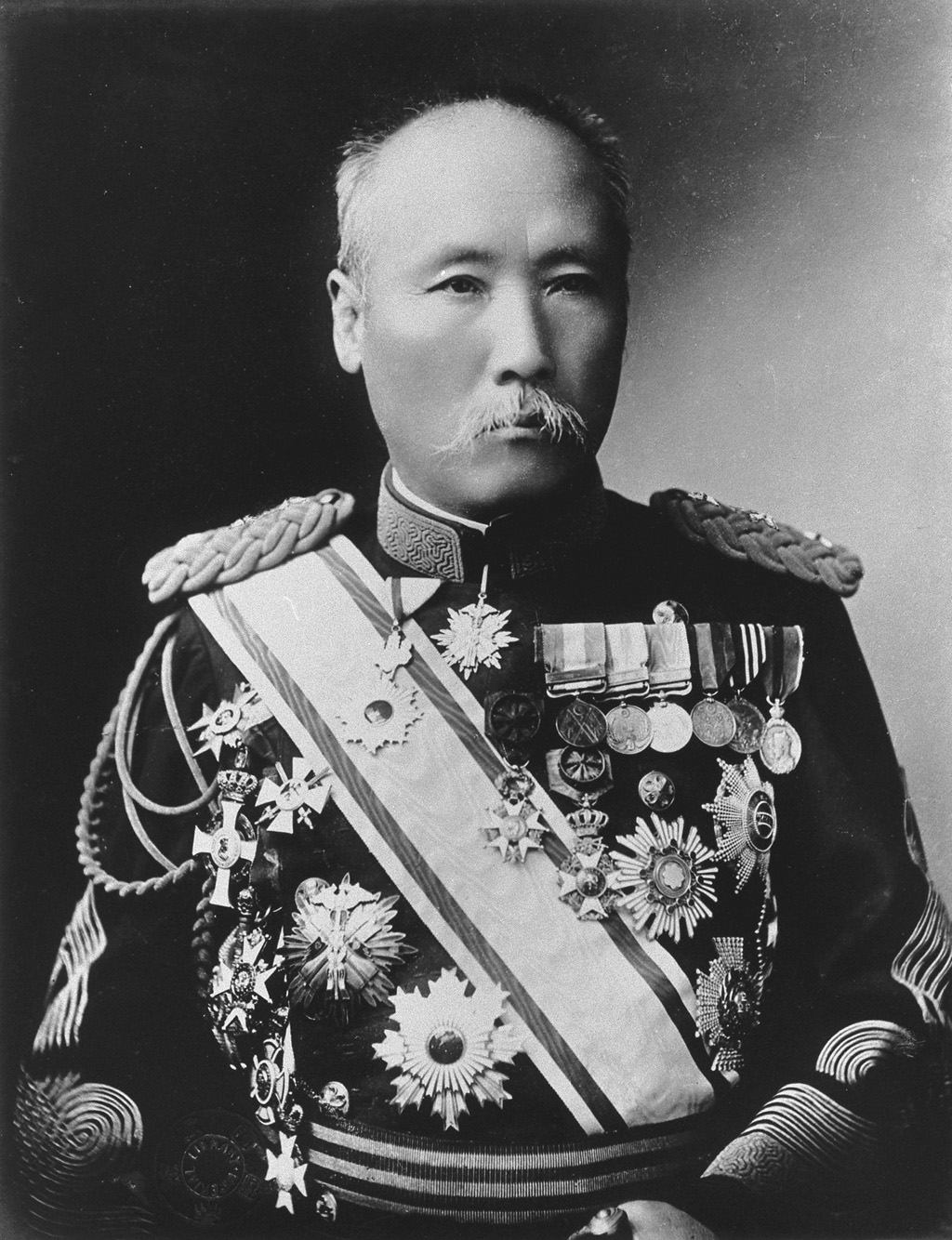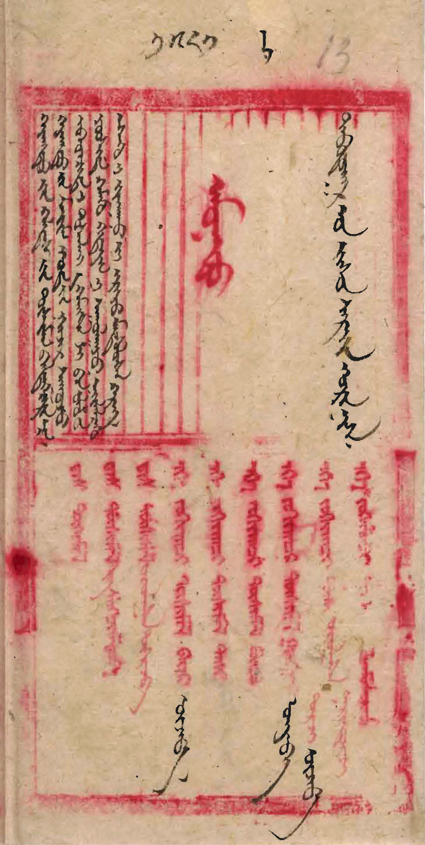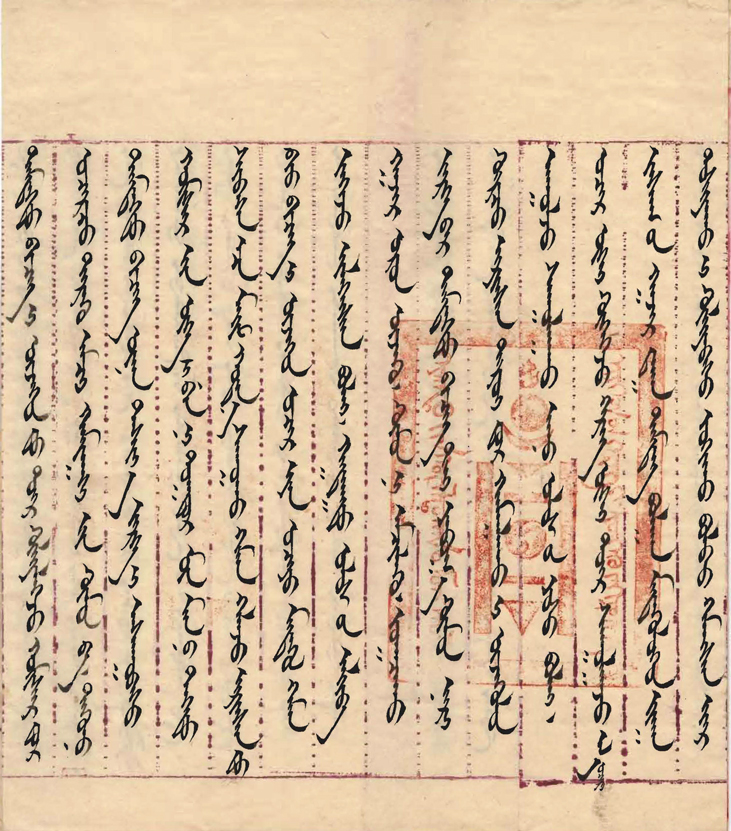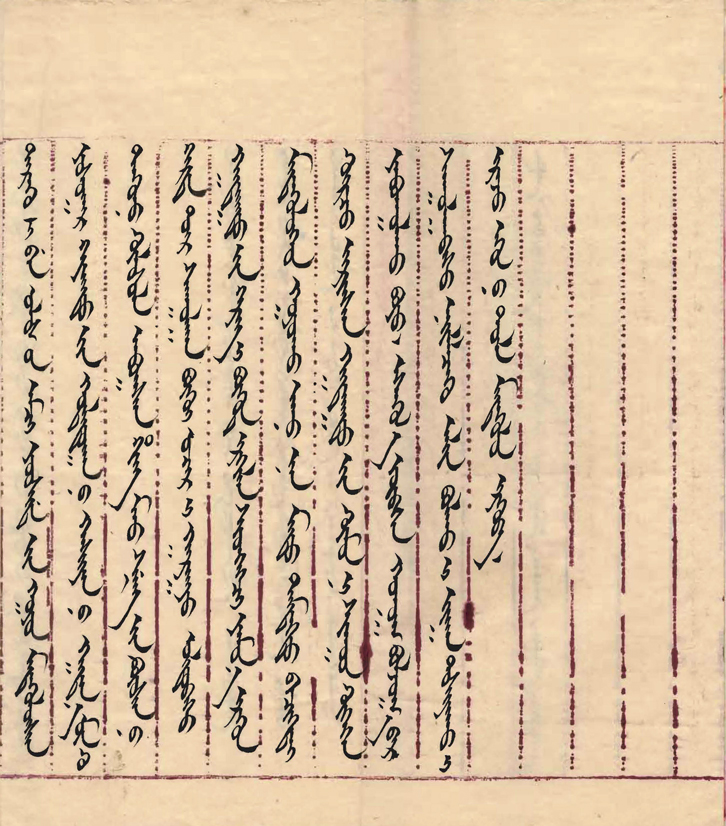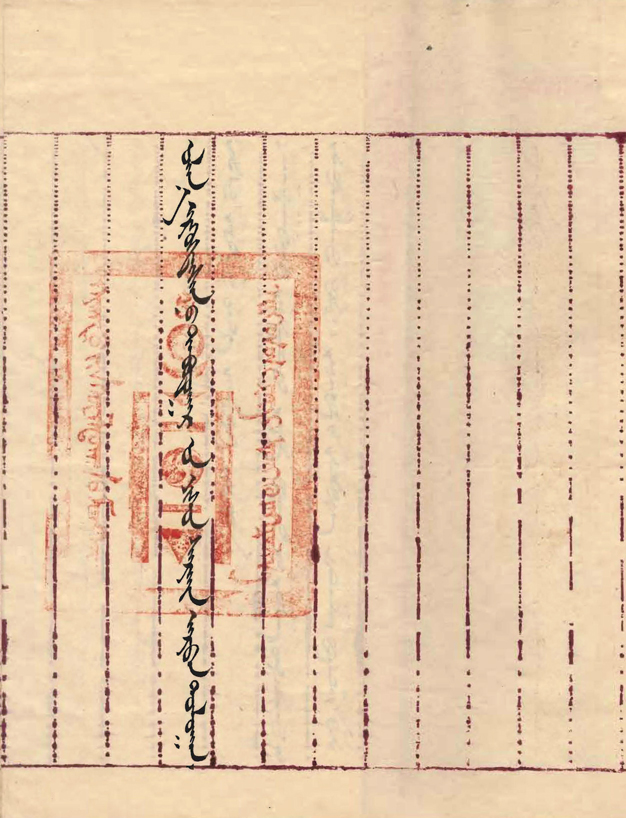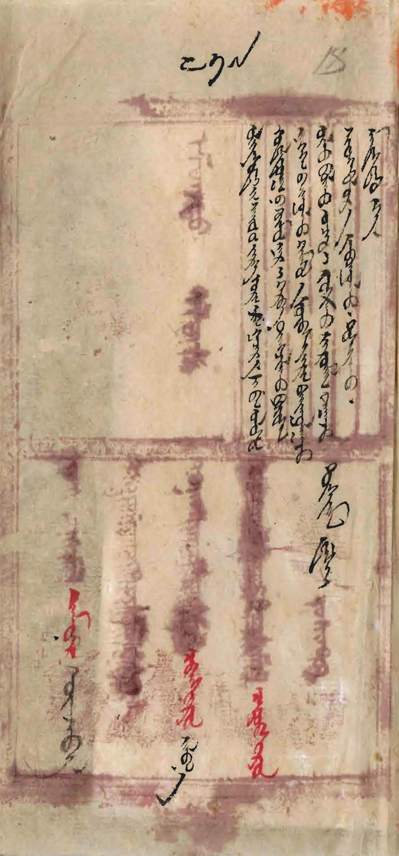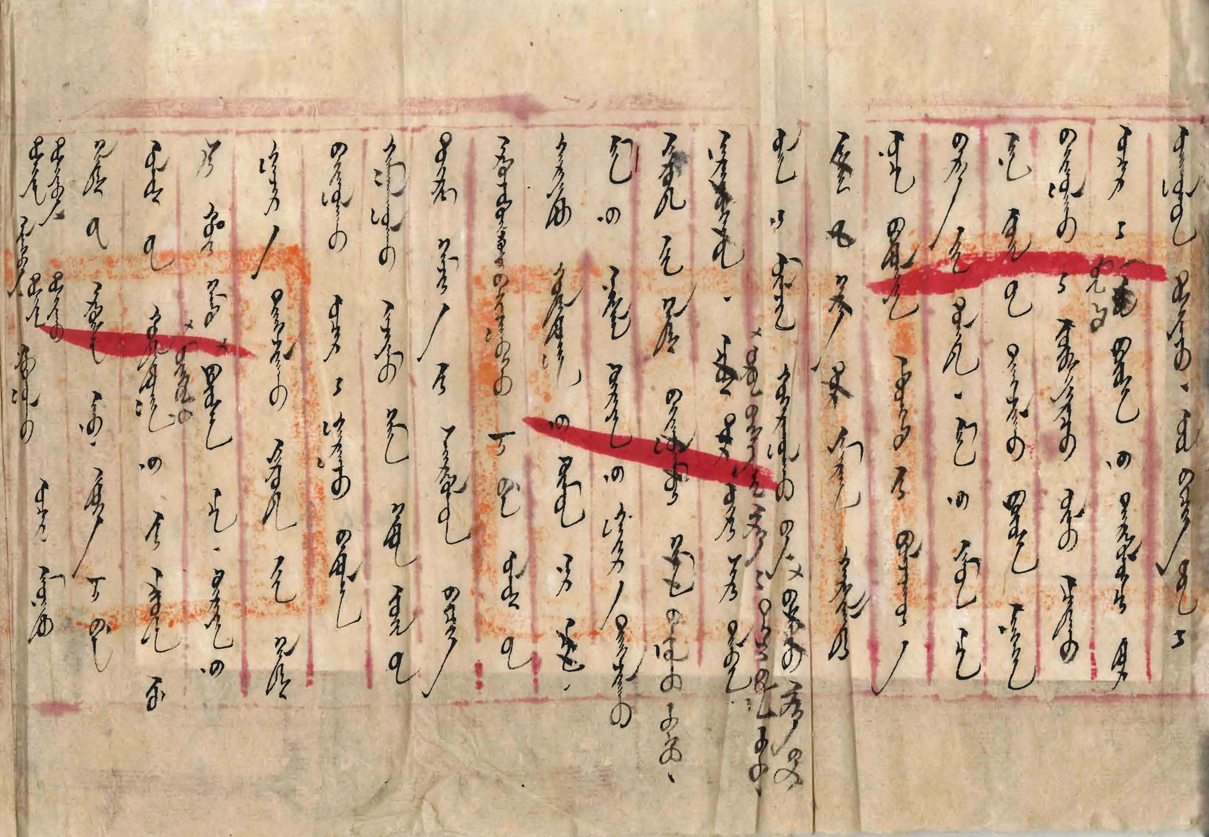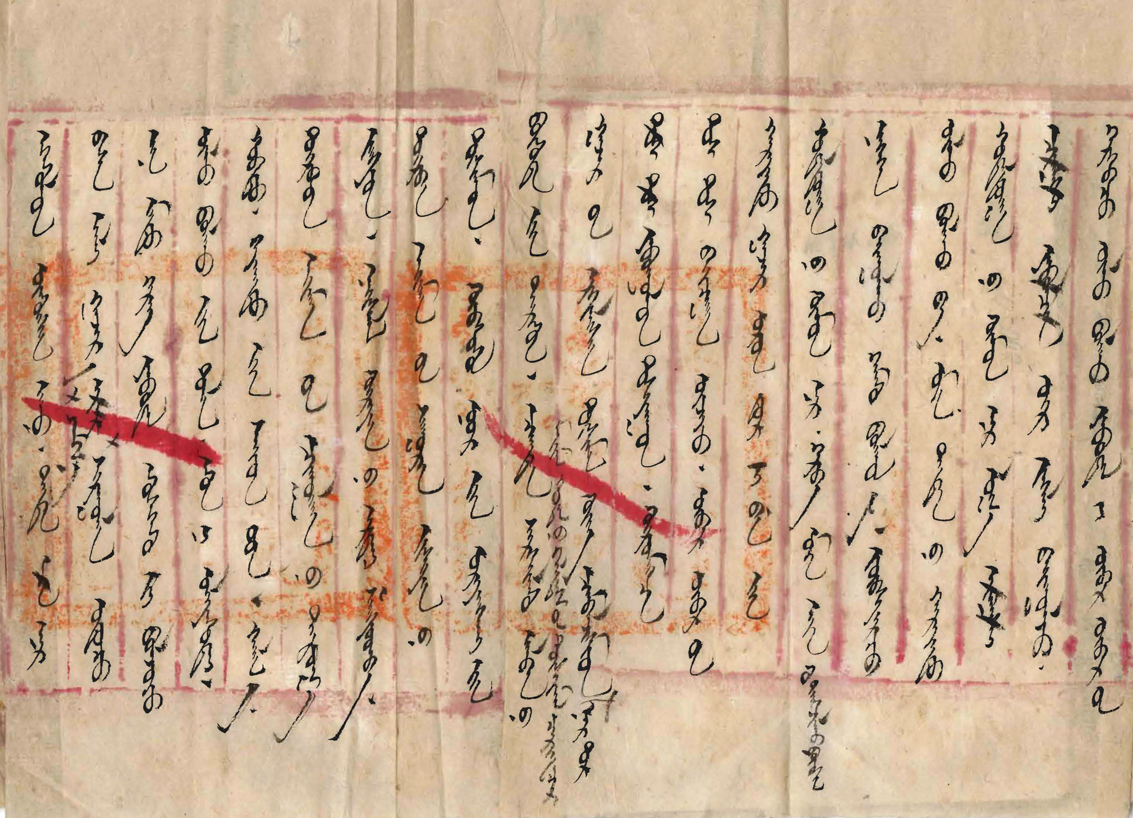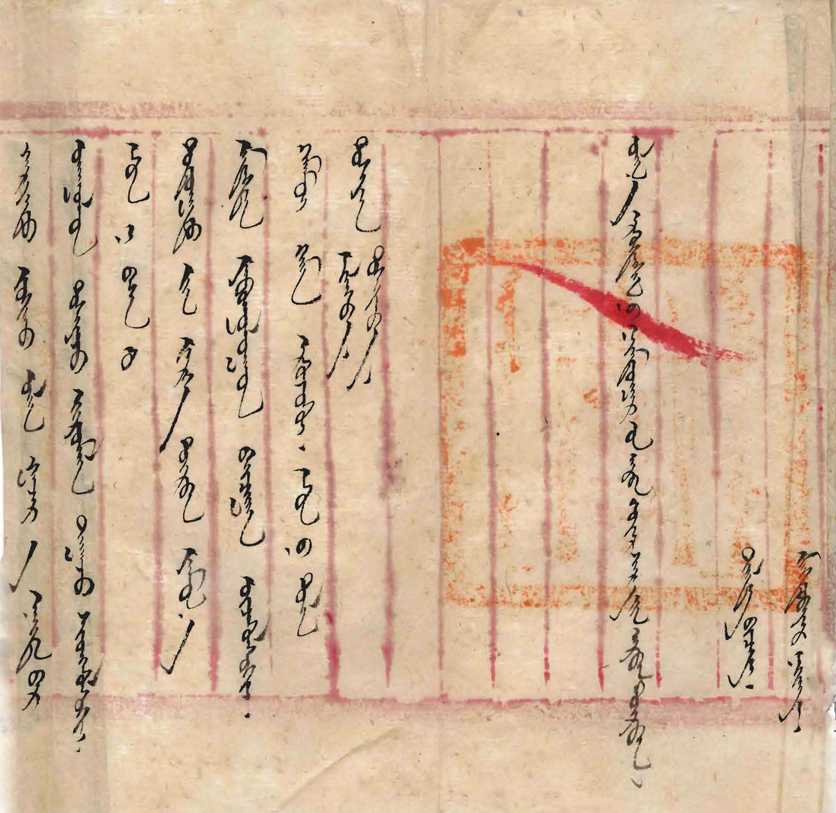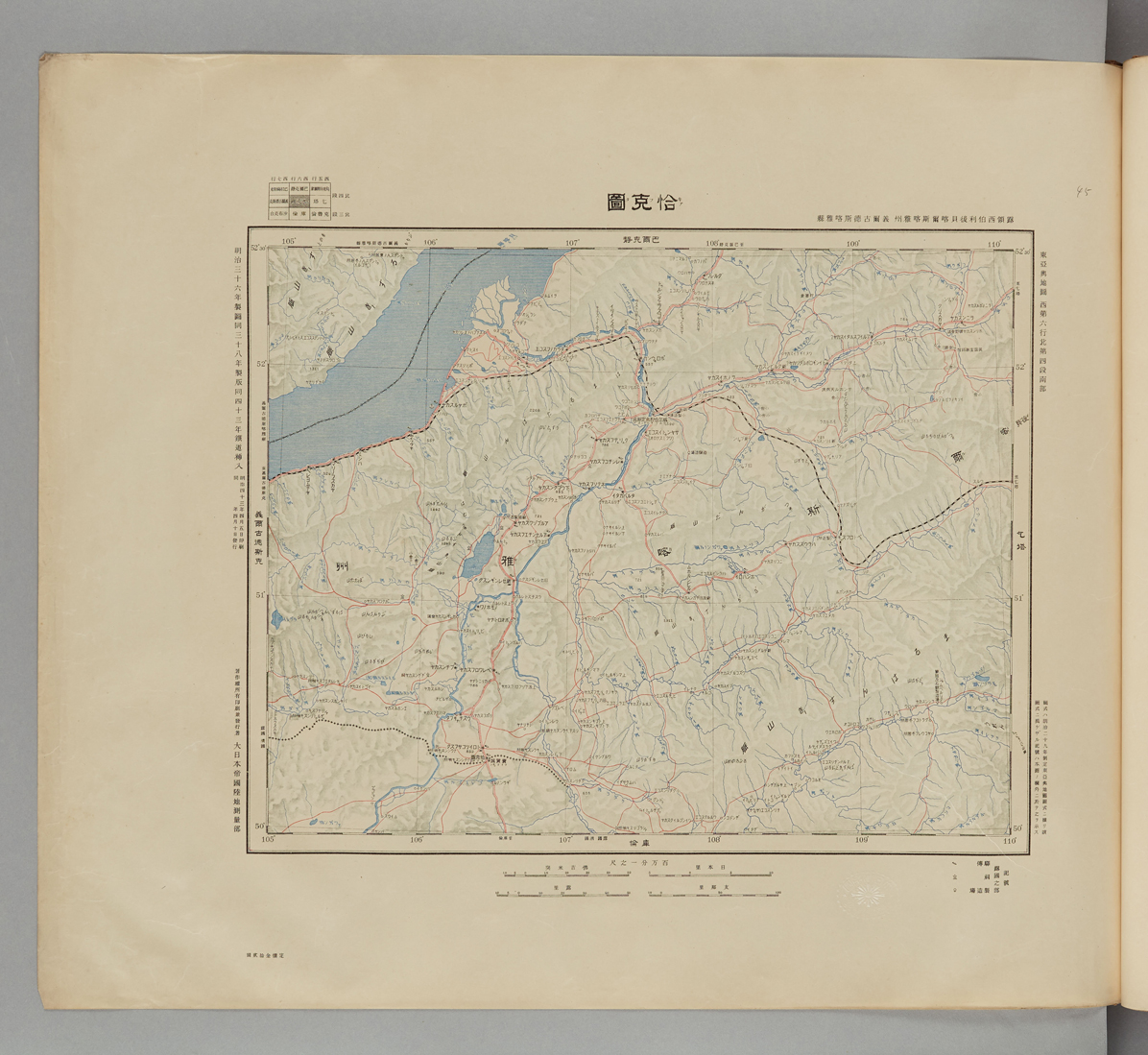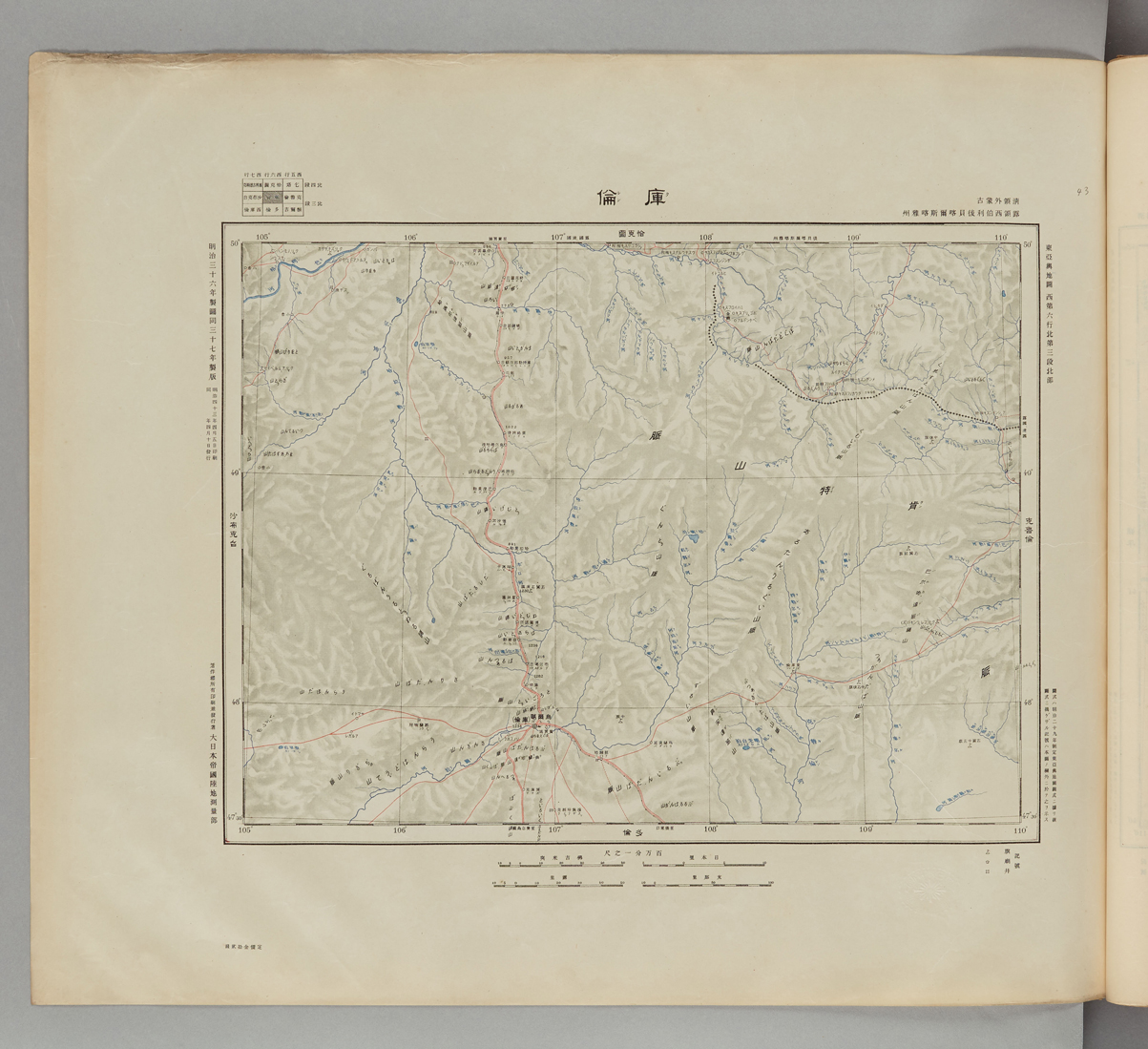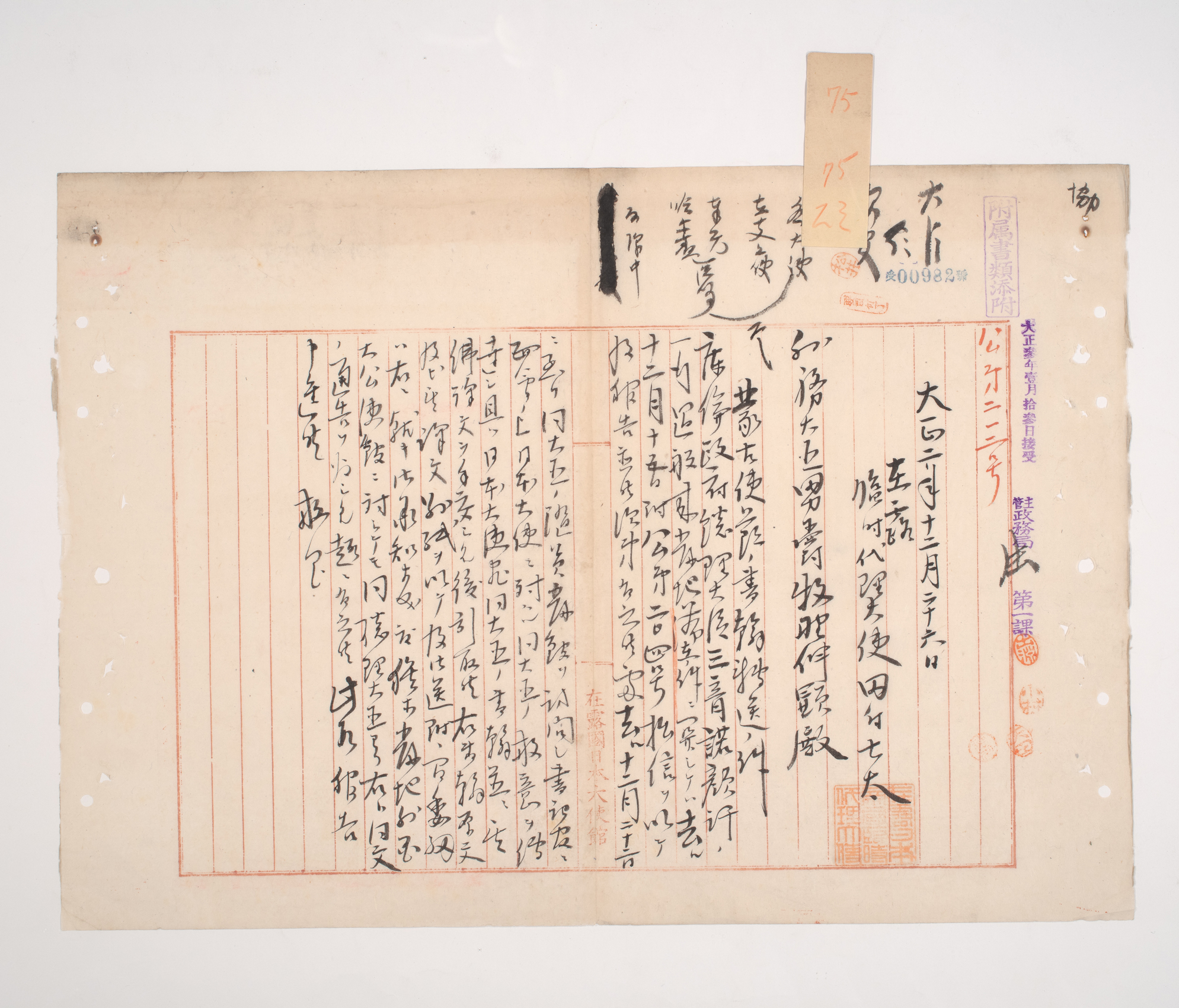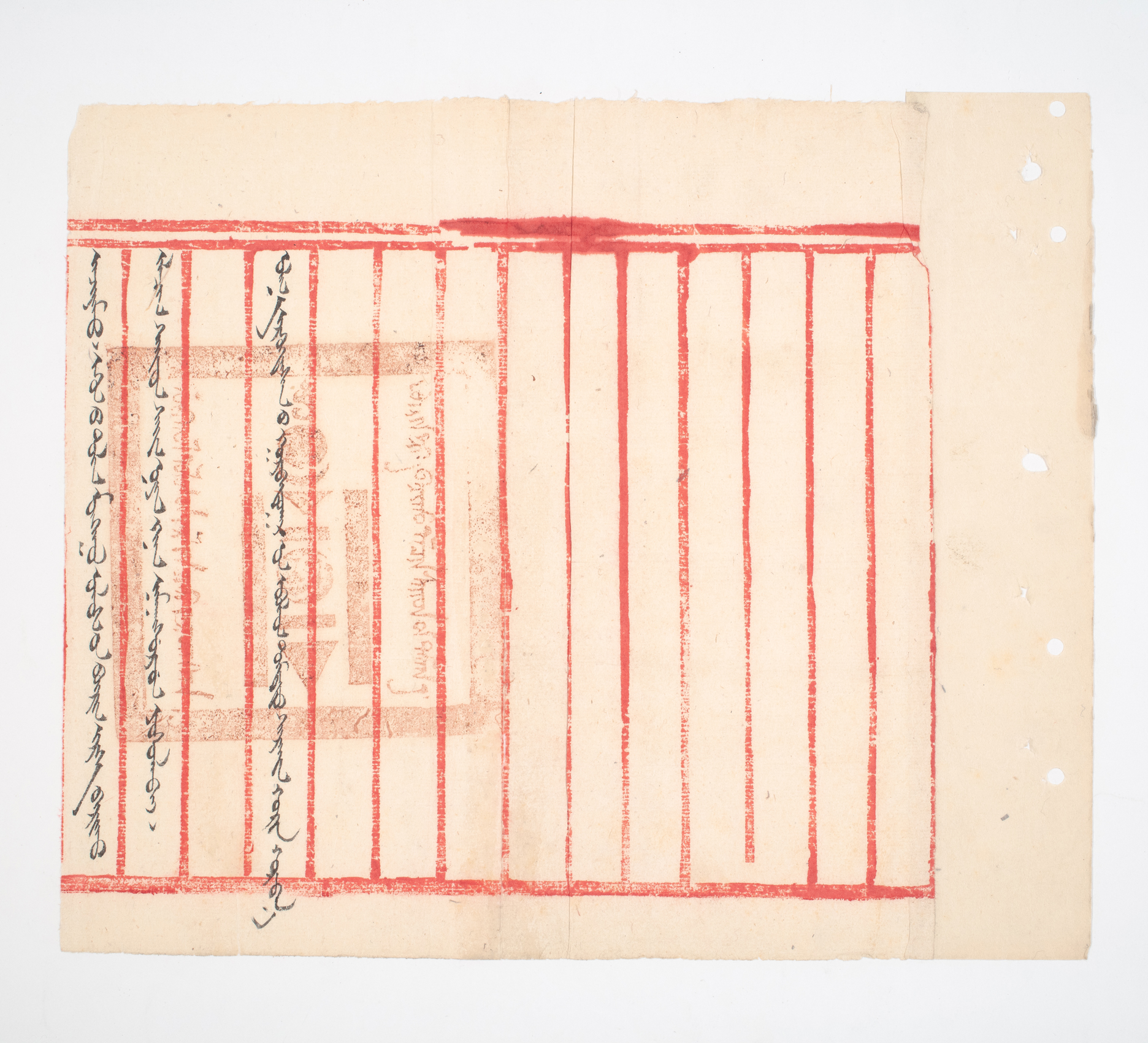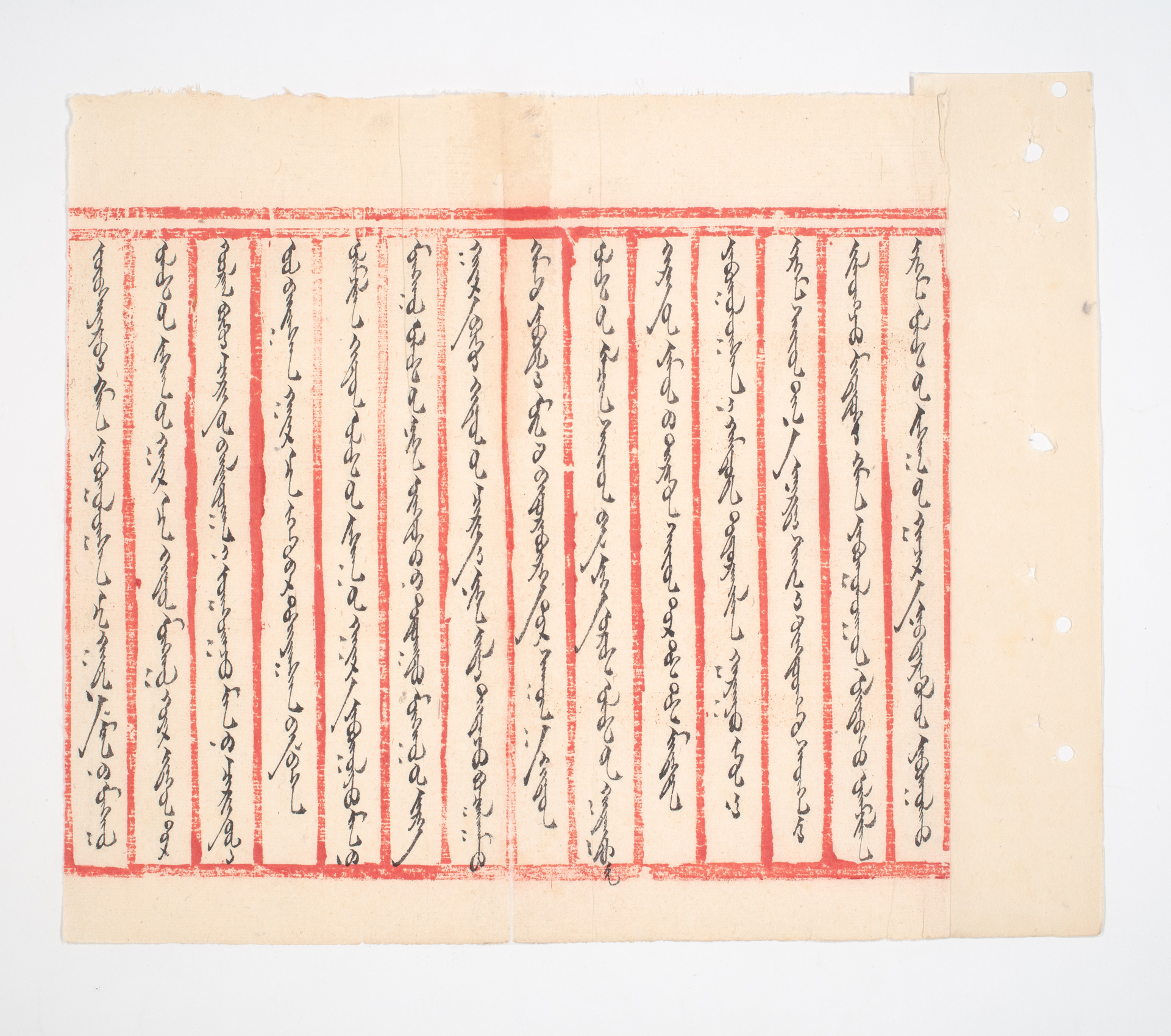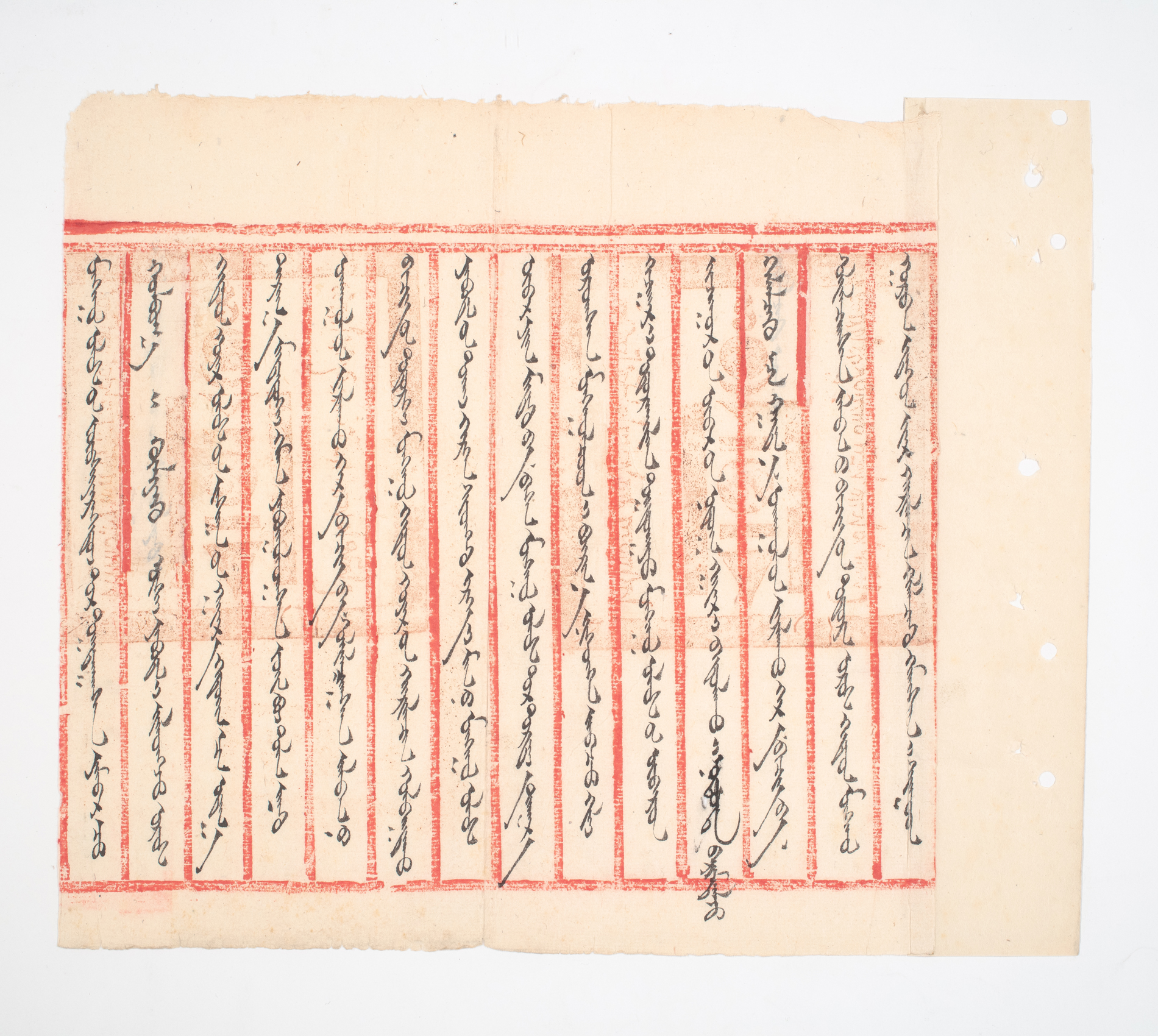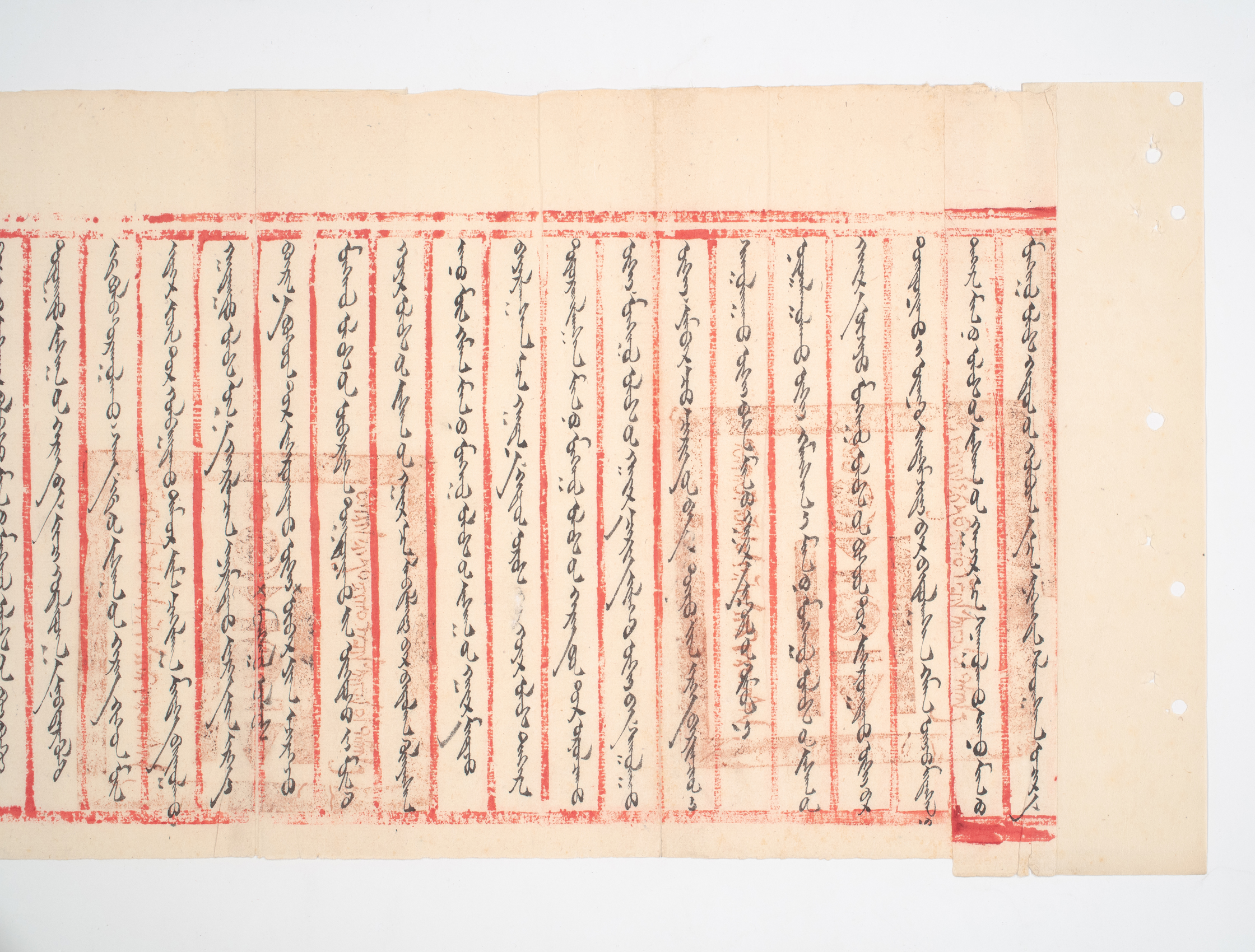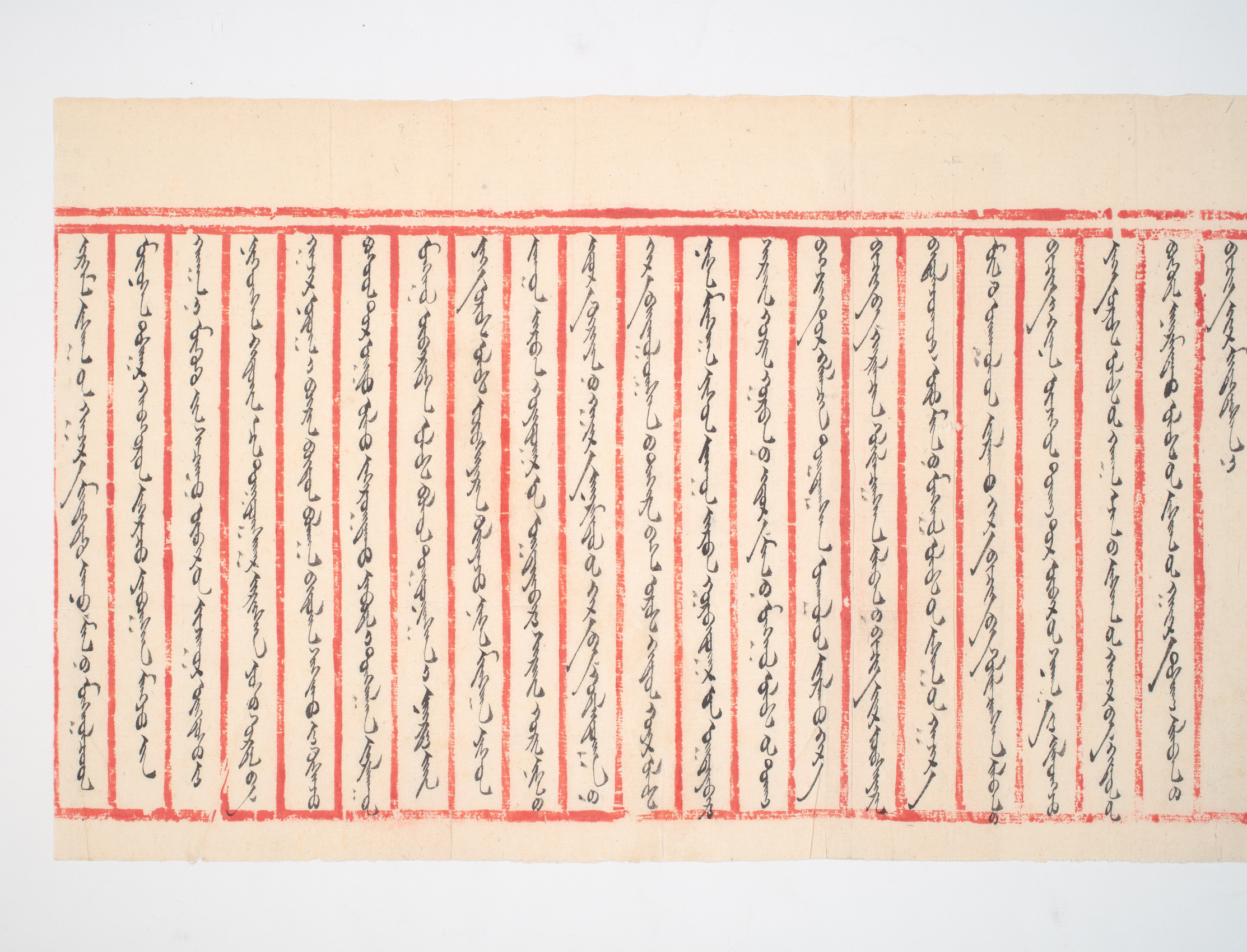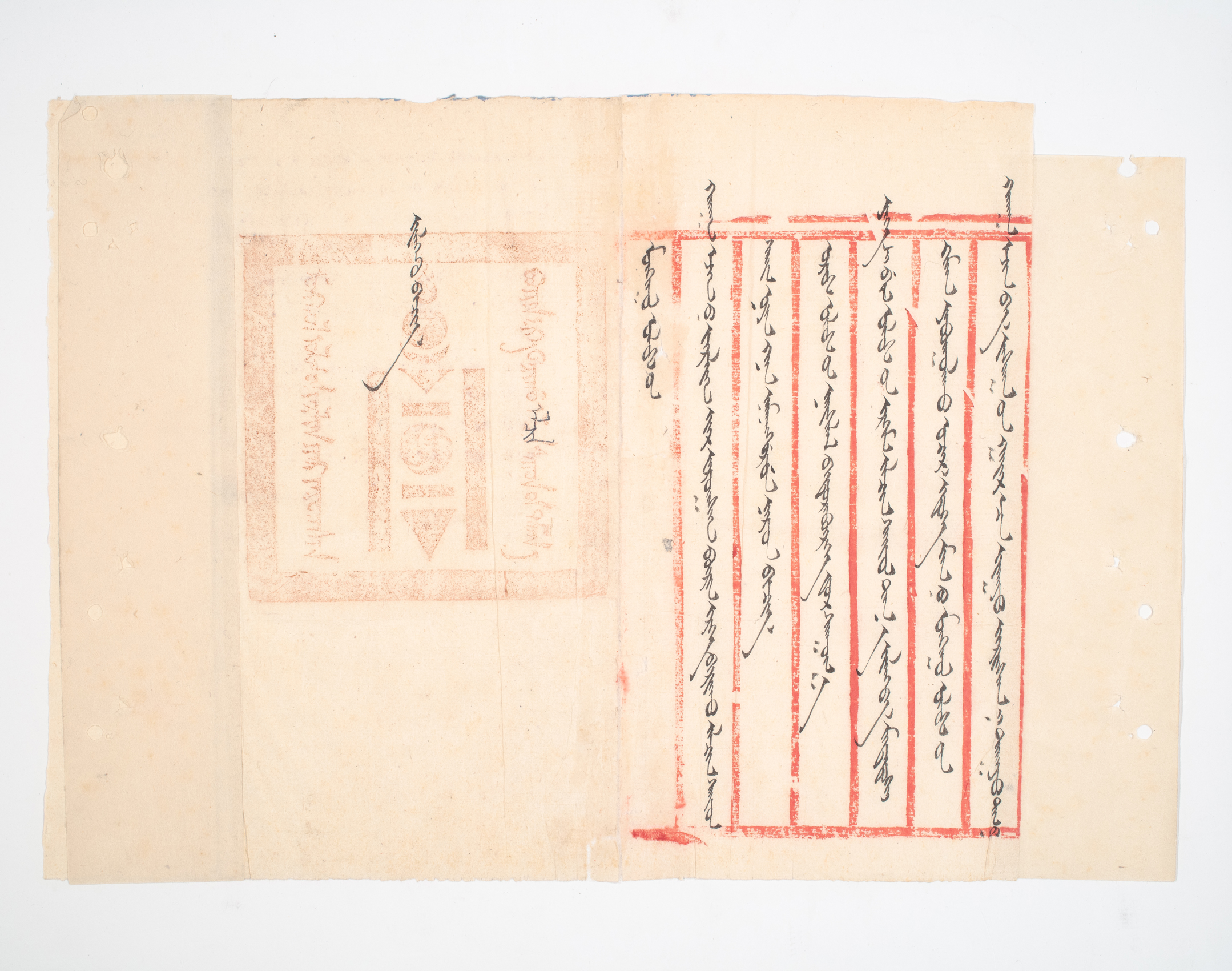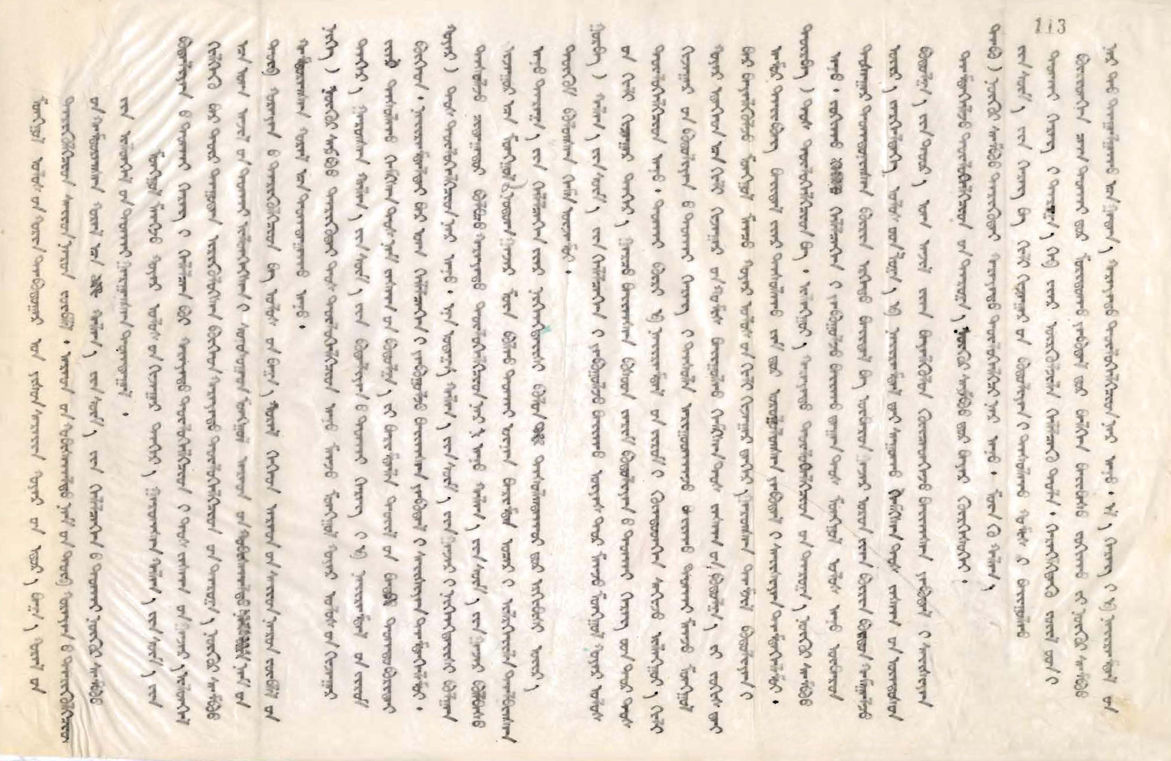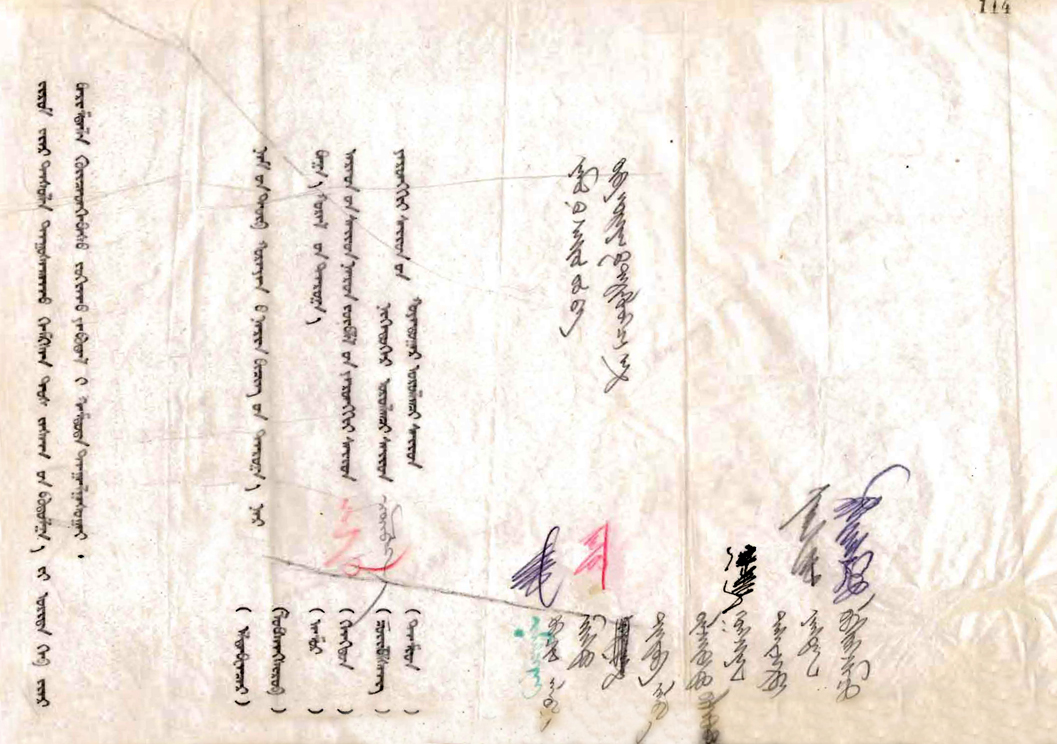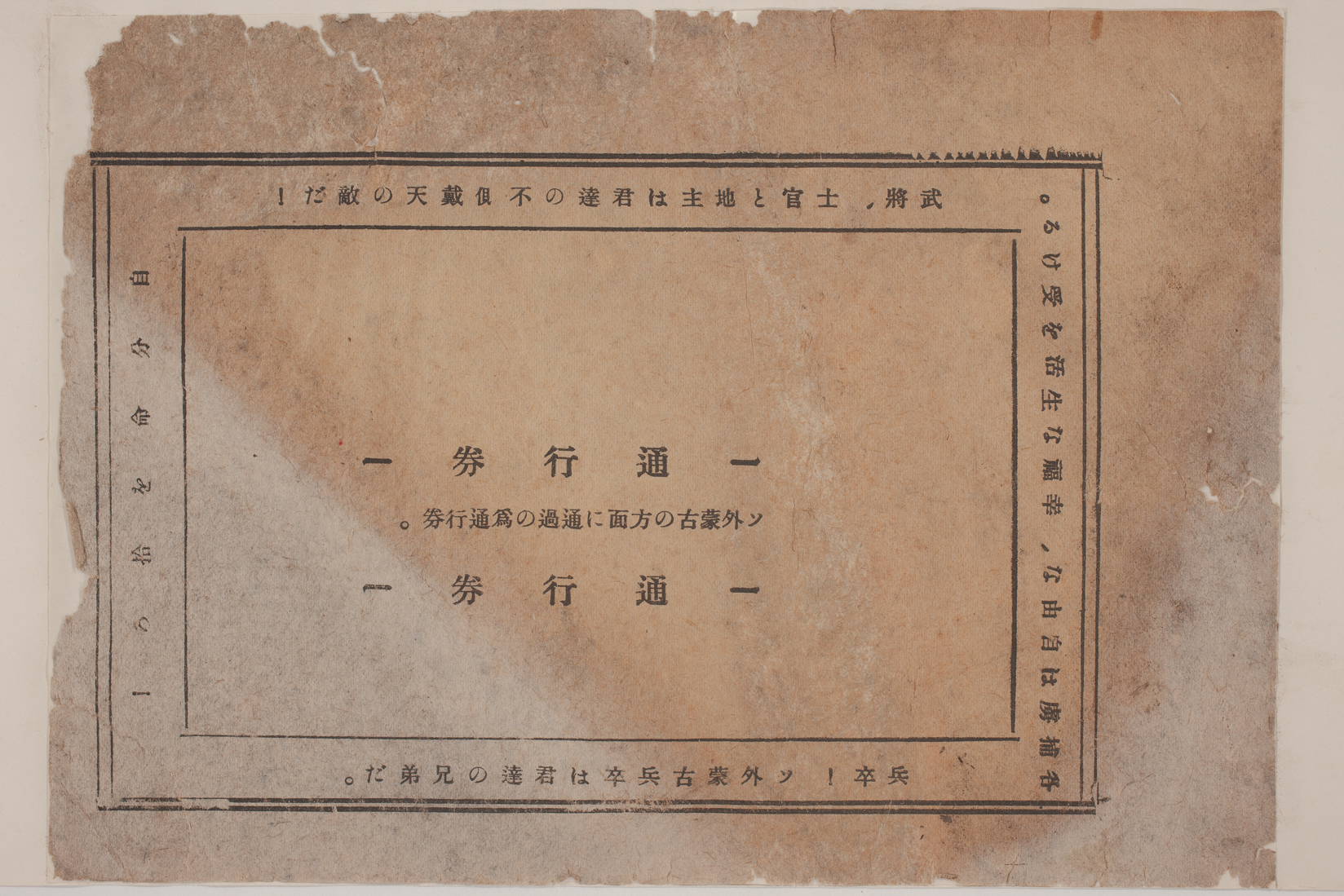ⅡRelations between Japan and Mongolia in the 19th and early 20th centuries
Japan had been closed to the outside world from 1639 to 1854 during the Edo period (1603–1868), and even after the change of era name to Meiji (1868), little was known about the relationship between Japan and Mongolia. After these periods, at the end of the 19th century, people from Japan began to visit foreign countries in order to learn more about the outside world. Some of them explored Mongolia, which was connected by land with Europe. They documented their explorations of this unknown land and passed them on. In addition, there are records of Japanese living in Mongolia. At the end of the 19th century, Japanese were living in Khüree (present-day Ulaanbaatar). However, in the first half of the 20th century, militaly tensions gradually increased, especially after the Manchurian Incident on September 18, 1931, and with the creation of Manchukuo, established by Japanese troops on Mongolia’s eastern border in 1932.
Japanese visiting Mongolia (FUKUSHIMA Yasumasa)
 Achievement of FUKUSHIMA Yasumasa who traversed Mongolia by single horse trip
Achievement of FUKUSHIMA Yasumasa who traversed Mongolia by single horse trip
Lieutenant Colonel (later Lieutenant General) FUKUSHIMA Yasumasa (1852-1919), an intelligence officer in the Department of the Meiji Army General Staff, crossed Siberia alone in 1892 on his return from the German Embassy, following a survey of British India and an inspection of the Balkan Peninsula in 1880s. He entered Mongolia from Altai, traveling to Khüree (present-day Ulaanbaatar), Kyakhta, and Irkutsk. He stayed in Mongolia for 60 days and recorded the customs and manners of the Mongolians he saw there in his book, Tankienseiroku (Record of a Single-Horse Expedition). This report, which introduced a wide range of information about Mongolian housing, writing, food, and lifestyle, was a direct source of knowledge about Mongolia for the Japanese of the time.
This document describes the achievements of Fukushima when he was awarded the third degree of the Order of Merit for his solo cross-country trip in June 1893.
 Portrait of FUKUSHIMA Yasumasa
Portrait of FUKUSHIMA Yasumasa
In the report of his travel in Mongolia, Fukushima introduced unique Mongolian customs such as brick tea (compressed tea), tea to be boiled. Brick tea was made from softened tea leaves that were shaped, pressed, and hardened for easy transportation to distant places. In Mongolia, it was a common custom to drink brick tea as milk tea.
At the time, the two largest exporters of brick tea in the world were China and Japan. In 1883, at a meeting of the tea traders’ association to discuss ways to expand their sales channels and improve the quality of tea production, information on the demand for green brick tea by Mongolians was reported along with actual samples. In the same year, Japan started the exportation of brick tea.
Japanese living in Mongolia
 Japanese people who wish to live in Kyakhta
Japanese people who wish to live in Kyakhta
In the early twentieth century, Dr. Yoshida, a citizen of Japan, travelled through Russian territory, visited Mongolia, and performed medical work in Mongolia.
In this letter dated September 17, 1915, it is written that Dr. Yoshida requested permission to live in Kyakhta to treat patients and to obtain an authorized note of protection.
 Japanese merchants in Uliastai and the surrounding 20 places
Japanese merchants in Uliastai and the surrounding 20 places
In 1918, Japanese trading firms explained the reasons for establishing a pledge firm in Niislel Khüree (present-day Ulaanbaatar) and sought protection. Also, it states some rules and regulations (related to this request).
However, it was feared if Japanese traders established pledge firm in Niislel Khüree, they would accept pledges and exploit the people through debt and mortgage their homes.
Therefore, Japanese merchants were not allowed to establish such pledge firms, and it was ordered that this notification regarding pledges was established for certain places like Uliastai and Khovd.
 Maps of Mongolia in the early 20th century
Maps of Mongolia in the early 20th century
From the 19th century, maps of areas outside of Japanese territory of military interest were made by the Imperial Japanese Army and Land Survey Department. Many points in Mongolia were also mapped, including Kyakhta, where Japanese conducted activities, and Khüree (present-day Ulaanbaatar).
The map was drawn at a scale of 1:1,000,000 in 1903 and printed in 1910.
Formation of the Bogd Khanate of Mongolia and letter to Japan
 Letter to Japan from the Bogd Khanate
Letter to Japan from the Bogd Khanate
Prior to the establishment of diplomatic relations in the latter half of the 20th century, Mongolia made representations toward Japan after 1910.
When the Xinhai Revolution broke out in China in October 1911, Mongolia declared its independence under the Bogd Khan regime. From November 1912 onward, the Bogd Khanate attempted to establish foreign relations with several nations, including Britain, France, Germany, the United States, and Japan.
In December 1913, during the visit of Prime Minister Tögs-Ochiryn Namnansüren of the Bogd Khanate to Russia, a letter was passed by his staff to the Japanese Ambassador to Russia. The letter informed the Japanese Ambassador that the Bogd Khanate had gained independence and was recognized by Russia and China, and asked him to convey the news to the Japanese government.
This material consists of two letters. One is a letter (dated December 26, 1913) from the Japanese ambassador to Russia, TATSUKE Shichita, to the Japanese Foreign Minister MAKINO Nobuaki informing that he had received a letter from Prime Minister
T-O. Namnansüren and that the Bogd Khan regime had addressed similar letters to other countries. The other is the letter from Prime Minister T-O. Namnansüren to the Japanese ambassador to Russia.
Battle of Khalkyn Gol / Nomonhan Incident
 The Manchurian Conference on the Khalkha Temple Incident
The Manchurian Conference on the Khalkha Temple Incident
This is the text of a resolution after hearing the report of J. Sambuu, the head of the delegation participating in negotiations on the Khalkha Temple Incident that occurred on the border between Mongolia and Manchuria in 1935. It instructed J. Sambuu and his delegation to follow the Government’s policy of resolving the Khalkha Temple Incident amicably.
Several rounds of Manchurian meetings were held, but no concrete results were achieved.
 Propaganda leaflet ("pass") distributed from an airplane of the United Forces of the Soviet Union and Mongolia during the battle of Khalkyn Gol
Propaganda leaflet ("pass") distributed from an airplane of the United Forces of the Soviet Union and Mongolia during the battle of Khalkyn Gol
From May to September 1939, the Battle of Khalkyn Gol was fought near the border between Manchukuo and Mongolia, as the Japanese Manchukuo Army and Allied Forces of the Soviet Union and Mongolia fought over the territory in the border area. At that time, Soviet and Mongolian airplanes scattered leaflets to dissuade the soldiers of the enemy country (Japan) from fighting.
On the leaflet is written, "Pass which allows you to go through the area of the Outer Mongolia and the Soviet Union," with the words printed on the border, "Warlords, officers, and landowners are your irreconcilable enemy!," "Each prisoner of war will receive a free and happy life," "Save your life!," and "Soldiers! Soviet and Outer Mongolian soldiers are your brothers."
The message was written in Japanese to encourage Japanese soldiers to surrender by telling them that their lives were guaranteed.
This document is held at the National Institute for Defense Studies of the Ministry of Defense.
In this way, exchanges between the two sides began again, but Japan and Mongolia eventually became involved in the World War.


